How to glue two types of wallpaper (combination)
One of the latest trends in interior decoration is the use of different colors on the walls. This technique allows you to diversify the design, focus on some part of the room. To correct the flaws in the layout, different patterns are used in the same color scheme. All these techniques work perfectly with wallpaper: they have different textures, colors, patterns. Moreover, the result can be estimated in advance - by rolling out two rolls side by side on the wall. That is why gluing wallpaper of two types is more and more popular: it is modern and offers an opportunity to make rooms interesting.
The content of the article
Rules for combining wallpaper and textures
In such a case as design, you cannot do without rules, and even more so when combining colors, patterns and textures. In order for gluing two types of wallpaper to look harmonious, a number of parameters must be taken into account.
Ceiling height
It is this characteristic of the room that dictates the choice of the type of drawing, and also largely determines the texture and color. If the ceiling height is less than 2.5 m, use light-colored wallpaper, without a rough texture, with a medium-sized pattern. If the ceilings are very low, a combination of a light main background with a mild texture or pattern, vertical stripes (drawing, or just canvases of a different color) that can be located on one wall, but it is better to distribute them into two, or even three, can correct the situation.
High ceilings - from 3 m and more - require a radically different approach. Here, on the contrary, a large drawing is needed, stretched in width. It is possible to use horizontal division of the walls using different colors in the upper and lower half (see details below). To make such a design look modern - this is still a classic technique - you need to try very hard with the choice of colors and / or patterns.
Room dimensions
In addition to height and width, we pay attention to geometry. First, to the square. If the room is large, you can use richer or darker shades. This will visually reduce the size. If plain dark walls do not please you, find a dark-colored wallpaper with a light large pattern. As a rule, these are floral motifs, abstraction or geometry occurs.
In small rooms, the opposite is true: use light colors. If with texture, then it is medium-sized, the drawing is small, not very pronounced.
Secondly, we are not paying attention to geometry. If the room is long and narrow. In this case, the situation will be saved by gluing wallpaper of two types: lighter ones are glued to short walls, and part of them "goes" around the corner. Thus, the geometry is visually aligned.
There is also a technique that is used if the entrance to a narrow room is on one of the long sides. Then it is worth highlighting the middle of the opposite wall in a different color, pasting the corners with the same wallpaper that is intended for short ones. The perception of the room will change significantly: it will no longer seem so long.
Selection of texture
In general, gluing two types of wallpaper requires careful selection of the texture and thickness of the canvases. When combining, it is desirable to use the same type of panels.If the docking occurs only in the corners, then you can not pay special attention to the thickness and texture: you still cannot really look at it in such a place. But if the connection of canvases on a flat wall, then the difference in thickness will only emphasize the transition. It looks, as a rule, too exaggerated.
Another moment. If you nevertheless decide to glue different types of canvases, you need to use the appropriate glue for them. For example, for wallpaper on a non-woven basis, your own - on paper - your own. The same applies to the coating - for vinyl and structured webs - one type, for acrylic - another. Do you want to fool your head? Buy a generic one. There are also such compositions.
Light or dark
If the room is too light, or the interior is too monotonous, it is not necessary to use dark wallpaper on all walls. You can paste over the wall opposite the window dark, let the rest be light. As a result, the room will not be very light, and you will get rid of the oppressive atmosphere created by dark walls.
This technique works and vice versa: to lighten the room, it is enough to glue light-colored canvases on the wall opposite the window. It will become much brighter.
How to arrange
There are several techniques for gluing two types of wallpaper, which can be used "neat" or combined two or three at a time. It is important to have a good idea of what you specifically want to achieve.
Vertical combination
Probably everyone knows that vertical stripes give a visual increase in the height of the ceiling. Moreover, the stripes do not have to be regular. In a modern interpretation, one wall can have striped wallpaper, and the rest can be plain colored or with a dim, slightly noticeable pattern.
But this is not always the case. You can distribute vertical stripes on different walls. Moreover, they can be regular - repeated at a constant interval. As you can see in the photo, the spacing on different walls can be different.
The stripes can be different - in color or pattern. The texture with this combination of wallpaper must be the same, otherwise you will get an incomprehensible mishmash. The easiest way to do this combination is to work with one collection. The fact is that most of the campaigns produce several images that are combined with each other. As a rule, they are available in several scales. One collection contains two or three single-colored backgrounds and several options with pictures.
You can see an example of using three wallpapers from one collection in the photo below and above. The combination is almost perfect - they were tested many times for compatibility before starting production. By the way, in most of the other photos, wallpapers are also combined from one collection. It's just that it's very difficult to compose different textures normally.
With vertical combination, there is another interesting technique that allows you to make the ceiling higher. One of the stripes "goes" to the ceiling. At the same time, the transition border is blurred, which gives a feeling of greater volume.
To make the principle of the arrangement of the stripes a little clearer, we will give several options in the graphic image. Drawings are made as seen from above.
These are win-win options that will always "play" when choosing paintings from one collection. If you need a guarantee that gluing two types of wallpaper will be effective, use one of these schemes. This wall design has been tried thousands of times and the result is excellent each time.
Horizontal division
A technique that can be attributed to the design classics.It has been used for a long time, but with the current abundance of colors and textures, it has received a completely new sound. This technique is more often used in rooms with a small area, but high ceilings. The horizontal division of the room helps to remove the "well" effect. It can be just a horizontal strip that surrounds the room. Often it is tied to the height of the window sills, but in general it is carried out when the plane is divided into three parts and can be located in the lower or upper third.
This rule is often violated: sometimes the strip is made at eye level and some decorative elements are hung at this level. It often looks very good. This technique is often found when the design of corridors and hallways.
The division zone can also pass at the top. Traditionally, the lower part is made in darker tones, the upper one is lighter. But this rule is also violated. An example is in the photo below.
Traditional options for combining companion wallpaper of two types with horizontal division:
- bottom (1/3) - striped wallpaper. top - plain colored or in small pattern;
- bottom - 1/3 - in a small pattern, top - large monograms or monograms;
- 2/3 at the bottom of a large drawing - upward one-color.
Zoning
Wallpapers of different colors in one room are also used if it is necessary to emphasize zoning. For example, in studio apartments, different functional zones are divided in this way: dining and relaxation.
The same principle can be applied in the nursery. In this case, gluing two types of wallpaper serves to separate the game part, bed, table. They do the same if two children live in the nursery. This is only possible if there is no competition between them, otherwise the number of conflict situations may increase.
With this combination, the use of different textures is allowed. But their separation by moldings is very rarely used. They try to either join in the corners, or choose wallpaper so that the junction does not look defiant.
Panel or decorative insert
Different wallpapers in one room were glued for a long time, only once they were made of fabric, and they were decorated in "frames" because they were very expensive and were available only to the upper class. Since then, it has become a custom: gluing wallpaper of two types in the form of a panel. And today, classic interiors are decorated in this way, using silk-screen printing, embossed or textured options for insertion.
If the style permits, elements of a different color are framed from molding... This design option fits perfectly into classic interiors or Provence, country style.
A similar panel is possible in more modern styles - modern, for example. But then the frame can be made from the border of the same color - from the same collection, or cut from the "body" of the wallpaper.
Another option is to paste over into a niche. In this case, the drawing and texture are selected according to the style, as well as for another design.
And in this case it is best to use wallpapers from one collection. A professional decorator will pick them up from experience or using flair, but for amateurs, this may not work. If you don't want to risk it, use one collection.
Color accents
There are two principles of this technique. First, you need to divert attention from some element that you consider unsightly. For example, uneven walls. In some apartments, they may be sloped. So that the eye does not cling to this fact, the opposite wall is highlighted with wallpaper of a different color, with or without a pattern.It is important that they attract attention.
The second technique is gluing two types of wallpaper to draw attention to some object in the interior. In bedrooms, this is often either a bed or a wall opposite. Here who wants to emphasize what (read about the choice of wallpaper in the bedroom here). In kitchens, a table is often allocated - thus forming a dining area. This is partly zoning, partly an accent. Still, attention is diverted from the kitchen area.
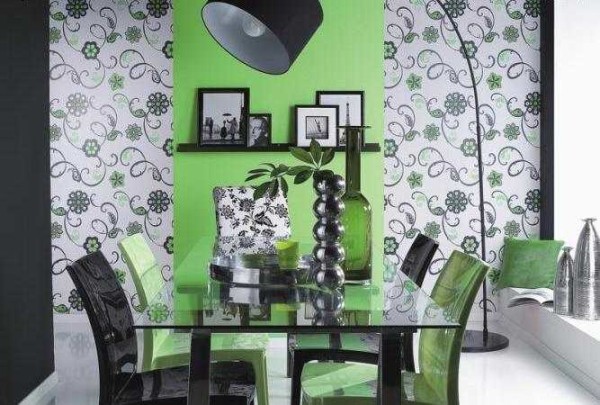
Accentuating a wall near a piece of furniture is an interesting way to glue wallpaper in two colors.
Actually, the accent can be not only a vertically directed strip, although this option is more common: our premises do not have high ceilings, therefore any means are good. In a tall room, the accent can be a wide horizontal stripe - or some part of the wall, as in the photo below.
Some rooms have bearing wall protrusions or niches. They often try to disguise them. This is completely optional. By highlighting this area with wallpaper of a different color, it can be turned into an architectural highlight that will add personality to the room.
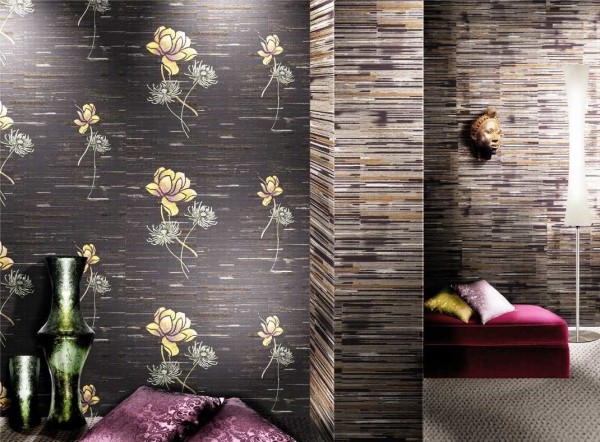
Two types of wallpaper gluing: protruding "remnants" of load-bearing walls can be turned into dignity
In general, the options for how to glue wallpaper of different colors in one room are endless. Choose what you like best, and to have more ideas, below there is a whole section with different photos.
Two types of wallpaper gluing: photo ideas
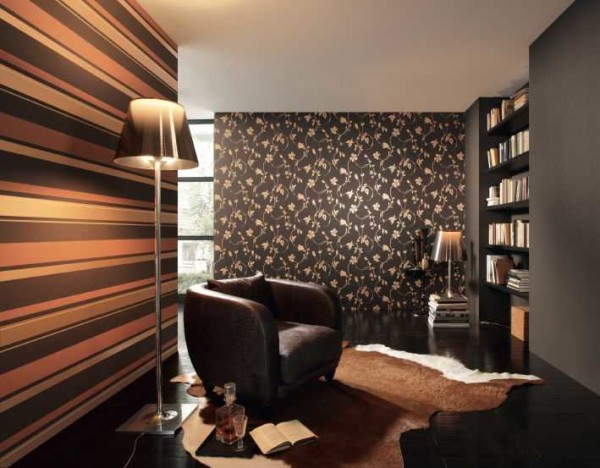
The strip is combined not only with plain surfaces, but also with a pattern. It is important that the interior is in the same colors.
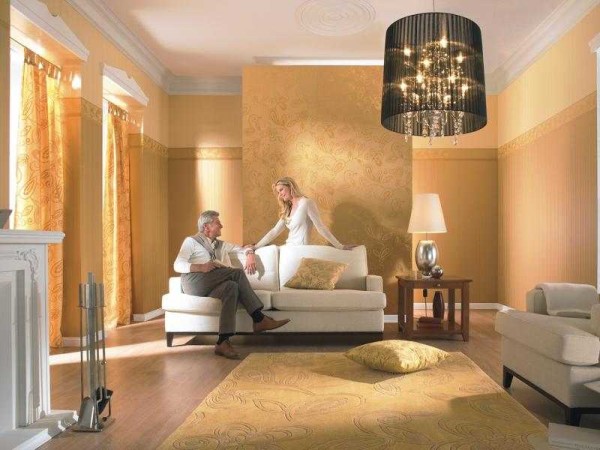
In the photo, different wallpapers in one room are selected successfully, the color is also repeated in textiles
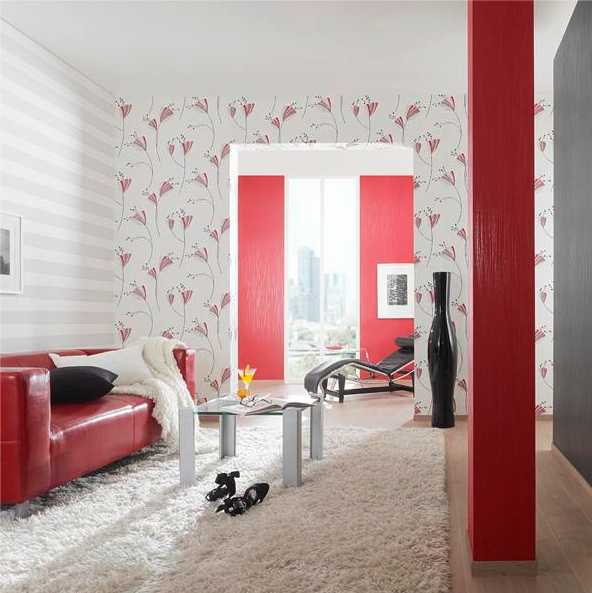
Remove the "trailer" effect - break a long wall with a partition, which is pasted over with eye-catching wallpaper

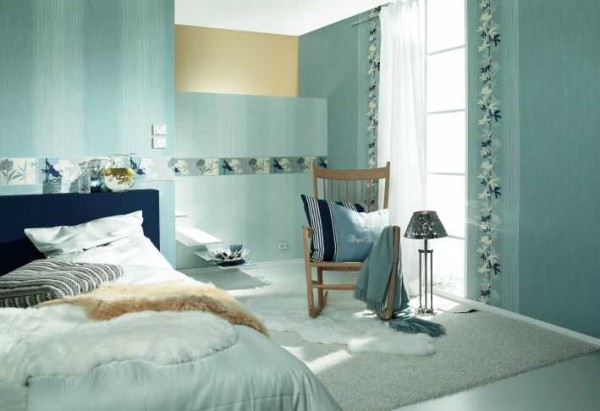
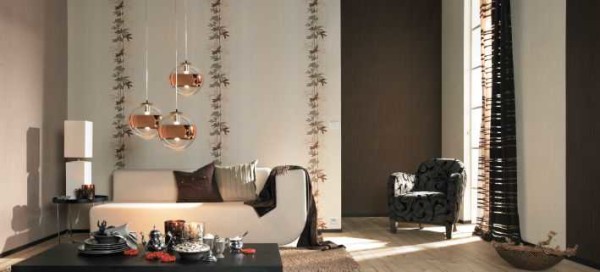
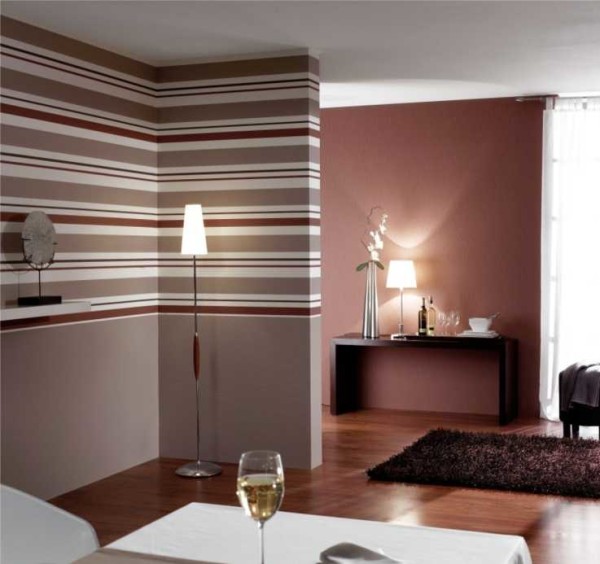

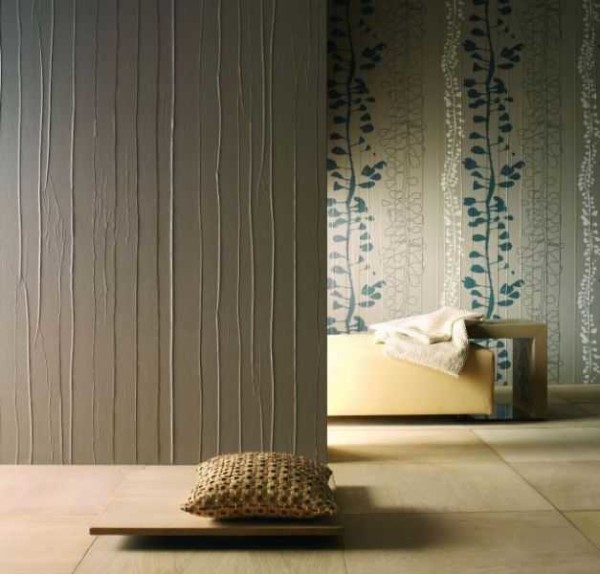
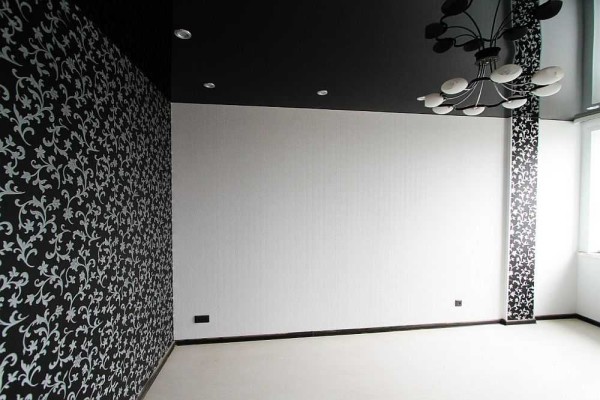
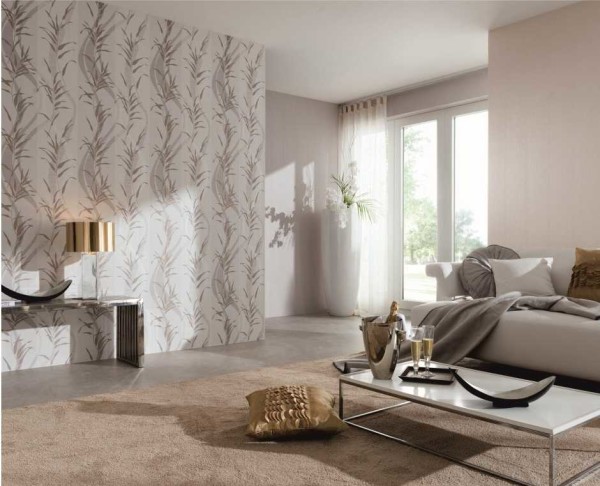
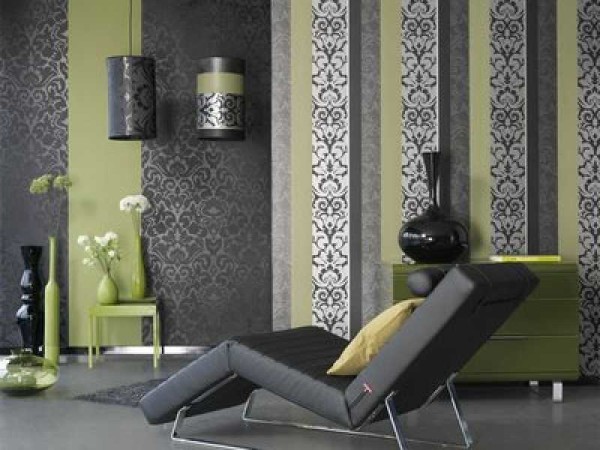
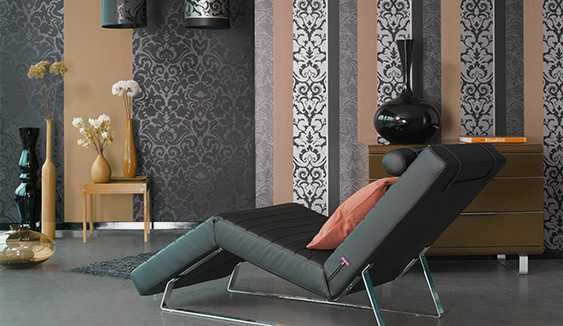

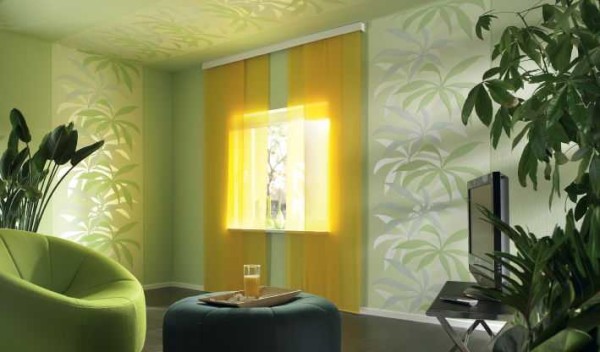
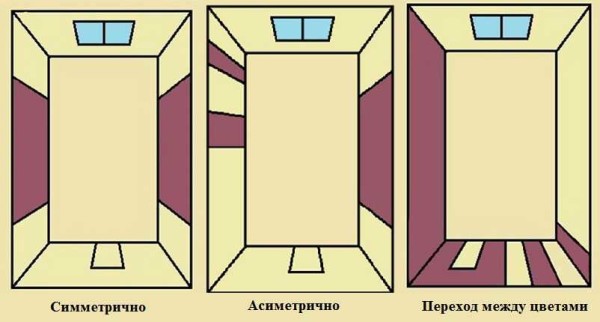
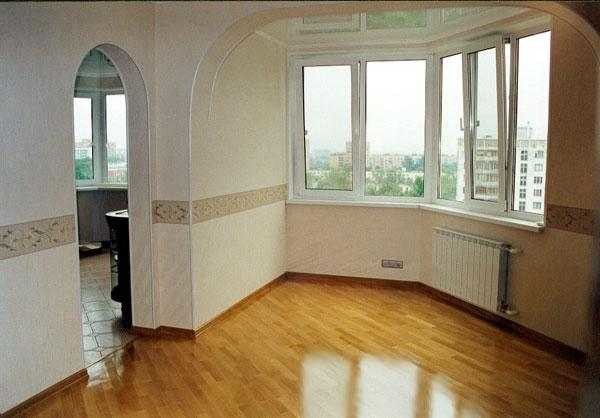
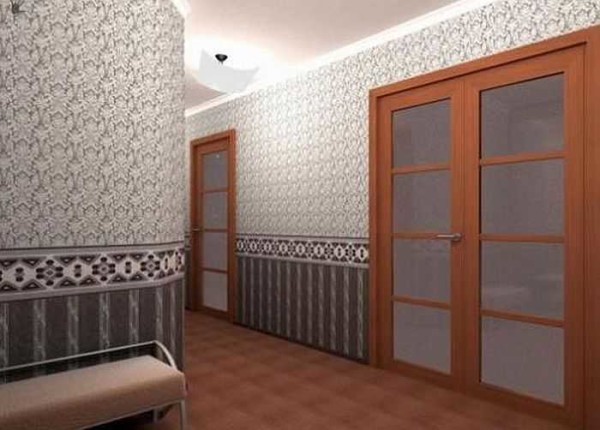
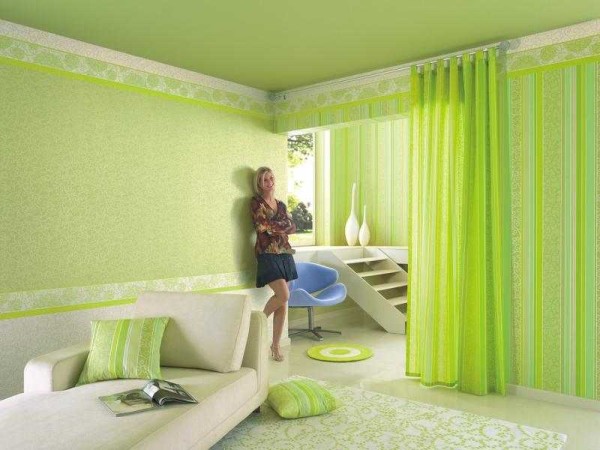
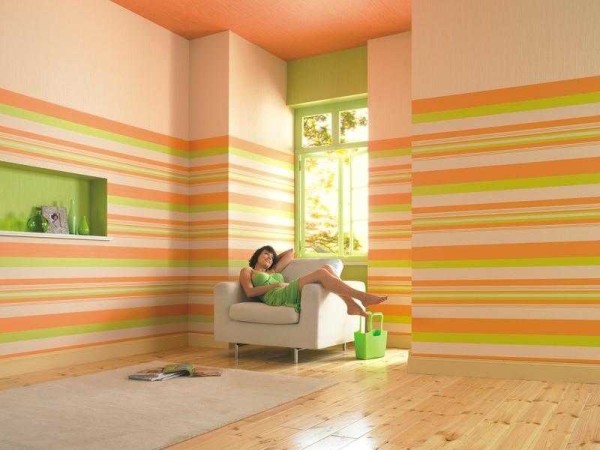
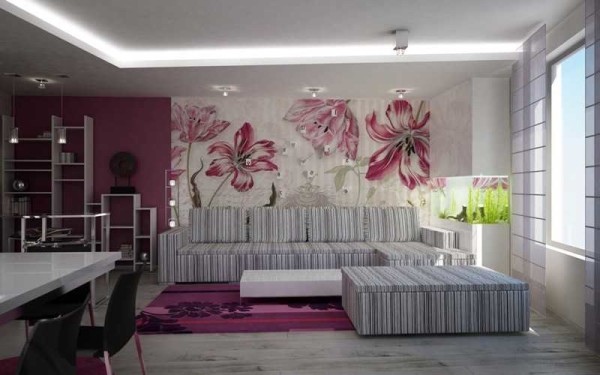
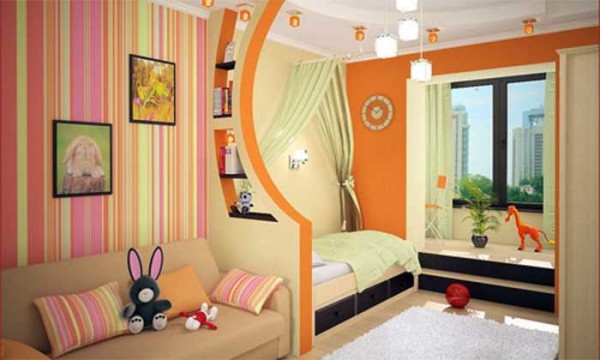
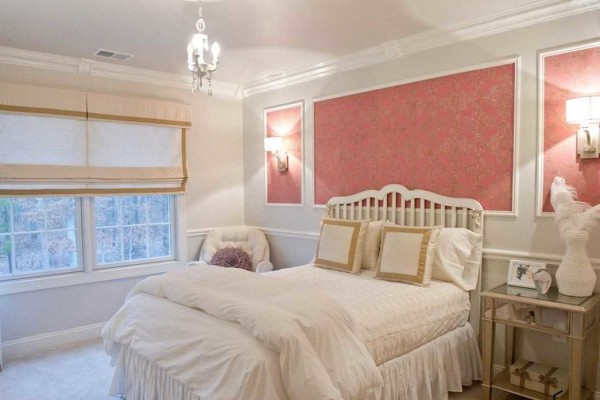
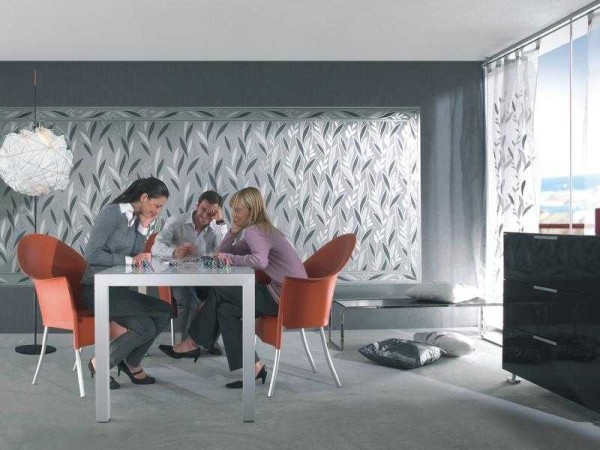
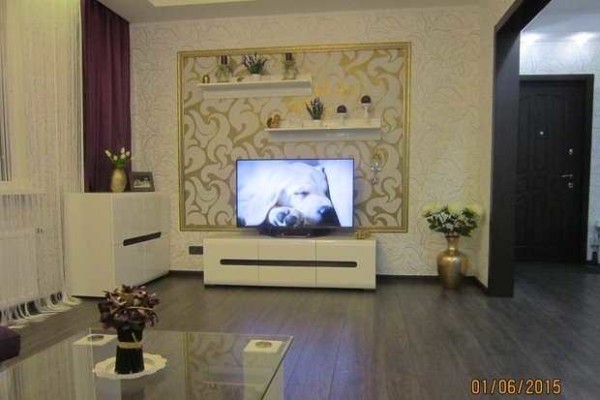
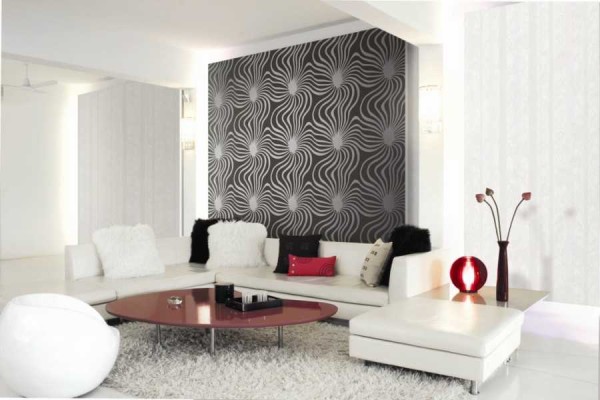
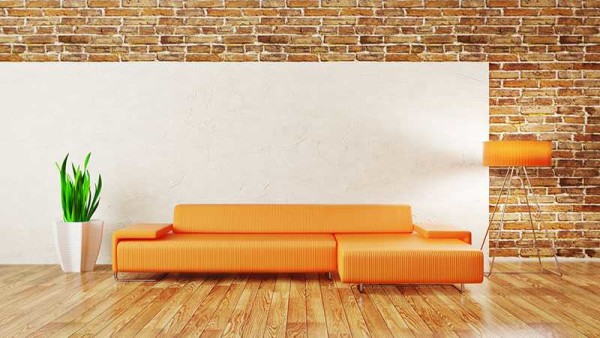
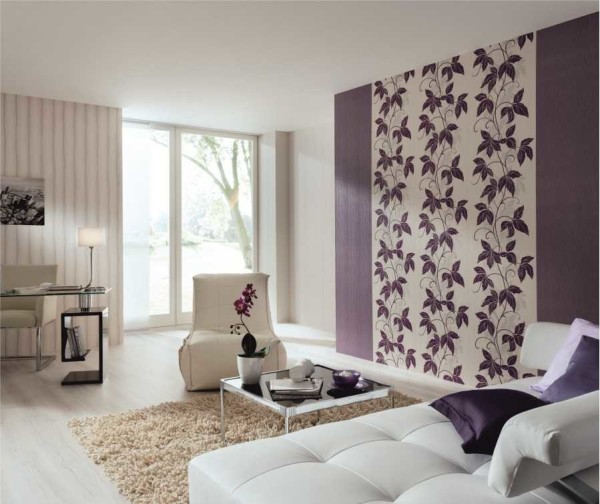
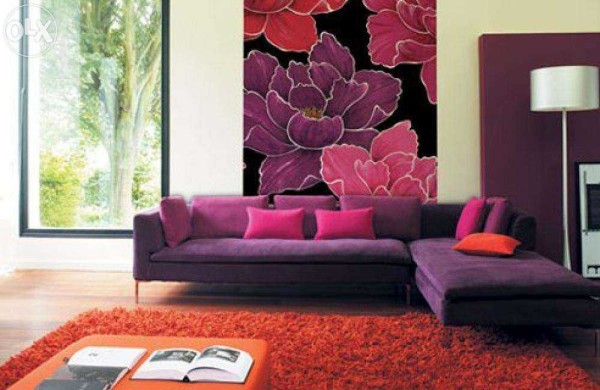
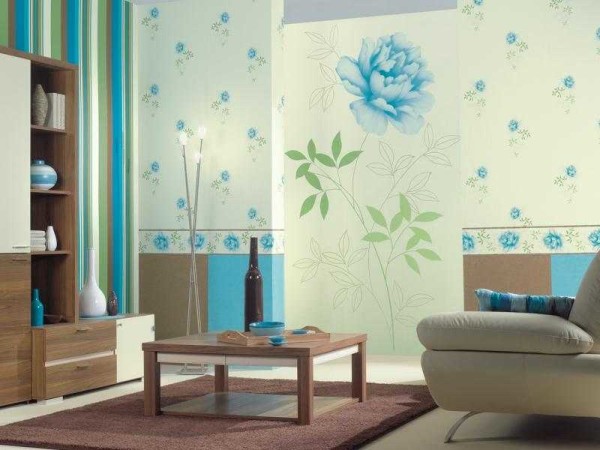
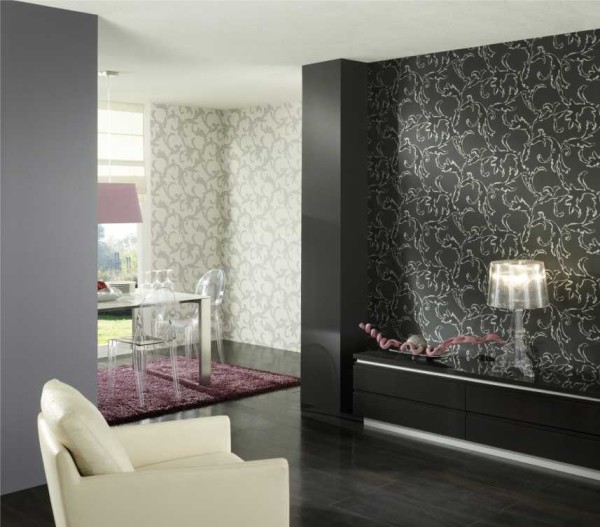
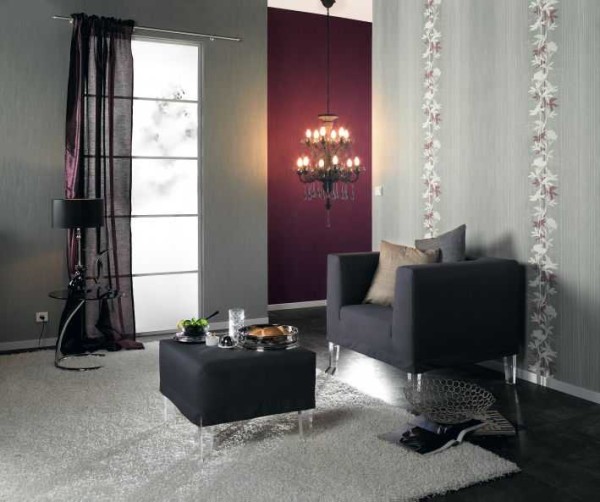
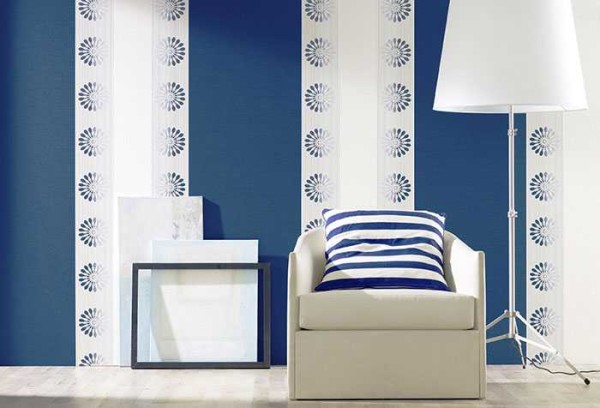
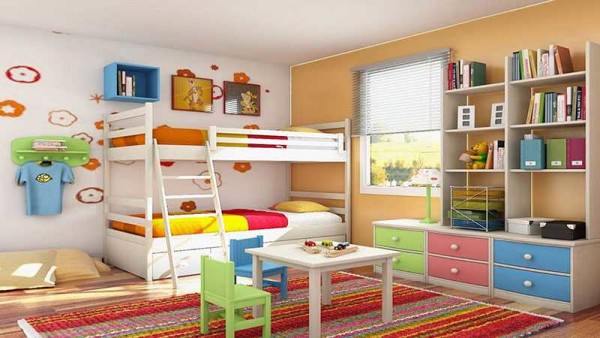
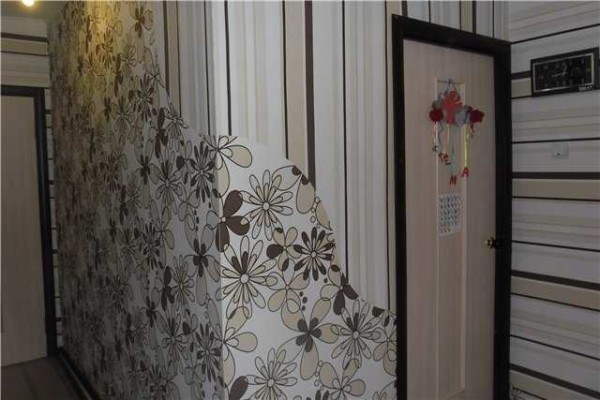
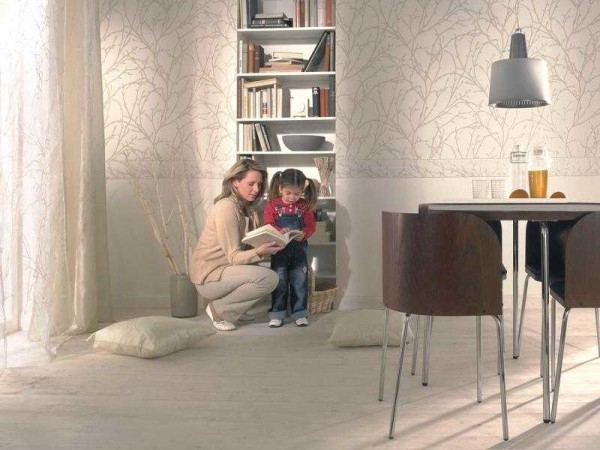
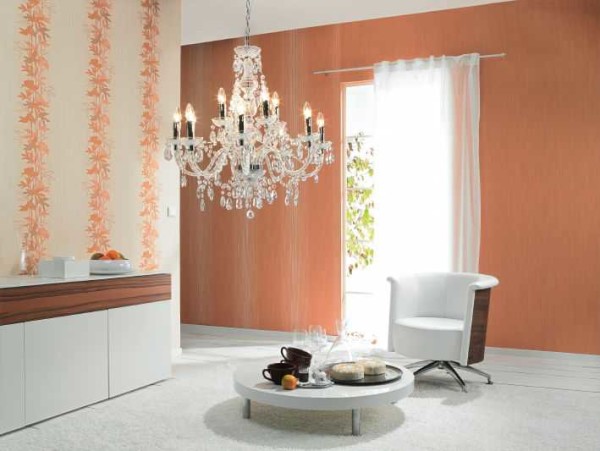
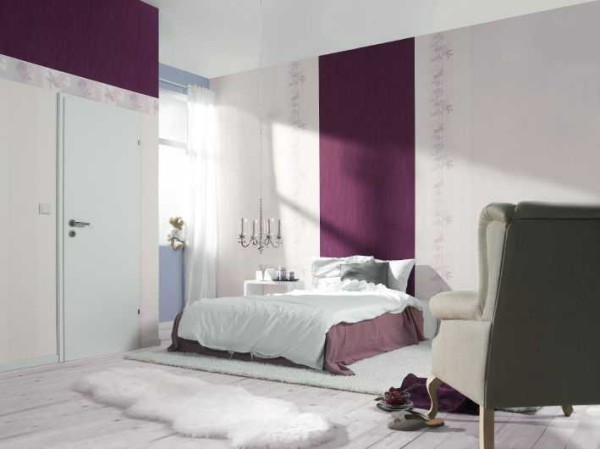
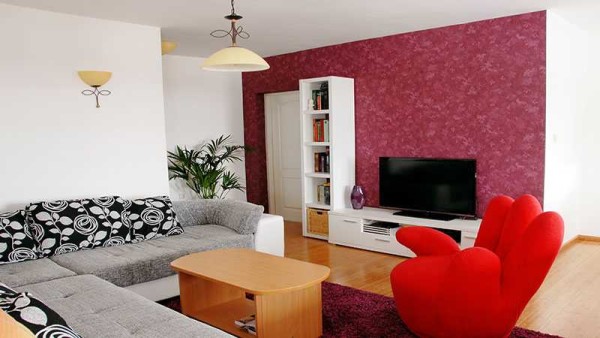
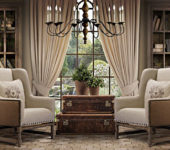

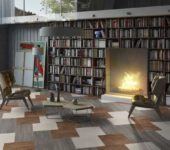
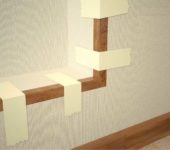
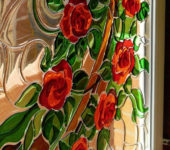





strange - there are no options with gluing in one color under and above the window, above the door. only the walls are highlighted. it was already in the 90s - the panel was called. and sold separately for every taste.